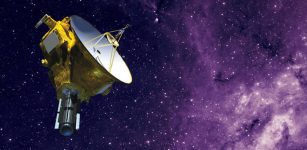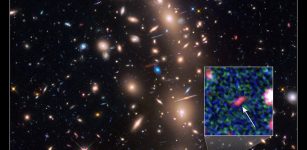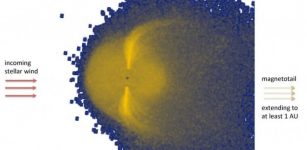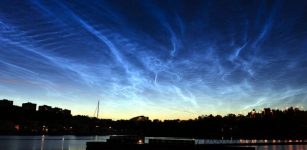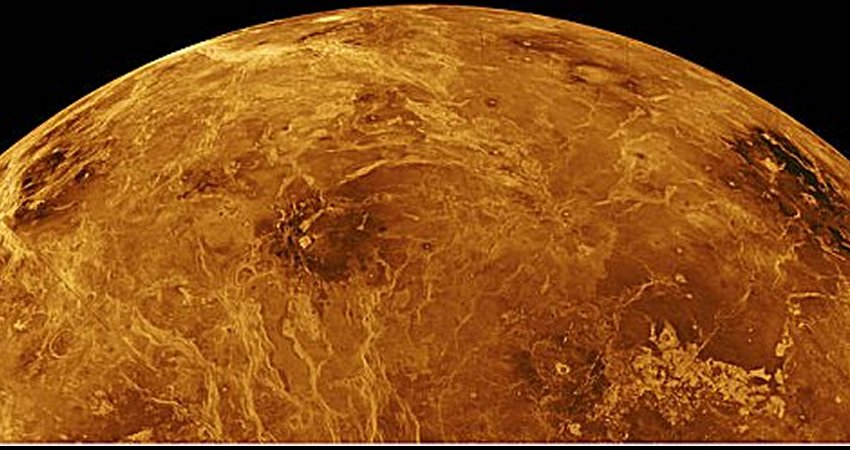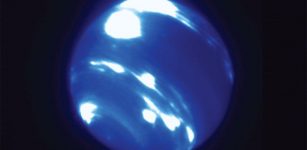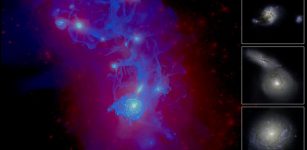Unusual Fast Radio Bursts In A Long-Dead Elliptical Galaxy Detected By CHIME
Eddie Gonzales Jr. – MessageToEagle.com – Mysterious fast radio bursts (FRBs), millisecond-long flashes of radio waves from space, have puzzled astronomers since their discovery in 2007.
The location of the fast radio burst, indicated by the oval outlines, is on the outskirts of a massive elliptical galaxy, the yellow oval at right. Image credit: Gemini Observatory
These signals emit an amount of energy in a fraction of a second that is equivalent to the energy the sun produces over an entire day.
Astronomer Calvin Leung, a Miller Postdoctoral Fellow at UC Berkeley, pinpointed the origin of fast radio bursts (FRBs) in the northern constellation Ursa Minor. He wrote most of the code enabling his team to combine data from several telescopes to triangulate a burst’s position with high precision.
Ín cooperation with the Canadian Hydrogen Intensity Mapping Experiment (CHIME), researchers discovered that the source was in the distant outskirts of a long-dead elliptical galaxy that by all rights should not contain the kind of star thought to produce these bursts.
Instead of finding an expected “magnetar” — a highly magnetized, spinning neutron star left over from the core collapse of a young, massive star — “now the question was: How are you going to explain the presence of a magnetar inside this old, dead galaxy?”
The young stellar remnants theorists believe to generate these millisecond bursts of radio waves are expected to have vanished long ago in this 11.3-billion-year-old galaxy. This galaxy, situated 2 billion light years from Earth, has a mass exceeding 100 billion times that of the sun.
The CHIME telescopes in British Columbia detected the unusual fast radio burst, dubbed FRB 20240209A, in February 2024. CHIME, Andre Renard, Dunlap Institute for Astronomy & Astrophysics, University of Toronto
“This is not only the first FRB to be found outside a dead galaxy, but compared to all other FRBs, it’s also the farthest from the galaxy it’s associated with. The FRB’s location is surprising and raises questions about how such energetic events can occur in regions where no new stars are forming,” said Vishwangi Shah, a doctoral student at McGill University in Montreal, Canada, who refined and extended Leung’s initial calculations about the location of the burst, called FRB 20240209A.
A third outrigger radio array will be operational this week at Hat Creek Observatory in Northern California, managed by the SETI Institute. The four arrays will significantly enhance CHIME’s ability to locate FRBs precisely.
“When paired with the three outriggers, we should be able to accurately pinpoint one FRB a day to its galaxy, which is substantial,” Leung said. “That’s 20 times better than CHIME, with two outrigger arrays.”
With this enhanced precision, optical telescopes are now capable of discerning the types of stellar groups—such as globular clusters and spiral galaxies—that generate these bursts, with the aim of identifying their stellar origins. Among the approximately 5,000 sources detected thus far—over 95% of which have been identified by CHIME—only a limited number have been traced to a specific galaxy. This limitation has impeded efforts to ascertain whether magnetars or other types of stars serve as the source.
Shah averaged many bursts from the repeating FRB to improve the pinpointing accuracy provided by the CHIME array and one outrigger array in British Columbia. After its discovery in February 2024, astronomers recorded 21 more bursts through July 31. Since the paper was submitted, Shion Andrew at MIT incorporated data from a second outrigger at the Green Bank Observatory in West Virginia to confirm Shah’s published position with 20 times the precision.
“This result challenges existing theories that tie FRB origins to phenomena in star-forming galaxies,” said Shah. “The source could be in a globular cluster, a dense region of old, dead stars outside the galaxy. If confirmed, it would make FRB 20240209A only the second FRB linked to a globular cluster.”
“It’s clear that there’s still a lot of exciting discovery space when it comes to FRBs and that their environments could hold the key to unlocking their secrets,” said Tarraneh Eftekhari, who has an Einstein Postdoctoral Fellowship at Northwestern and first author of the second paper.
“CHIME and its outrigger telescopes will let us do astrometry at a level unmatched by the Hubble Space Telescope or the James Webb Space Telescope. It’ll be up to them to drill down to find the source,” Leung added. “It’s an amazing radio telescope.”
Written by Eddie Gonzales Jr. – MessageToEagle.com Staff Writer



